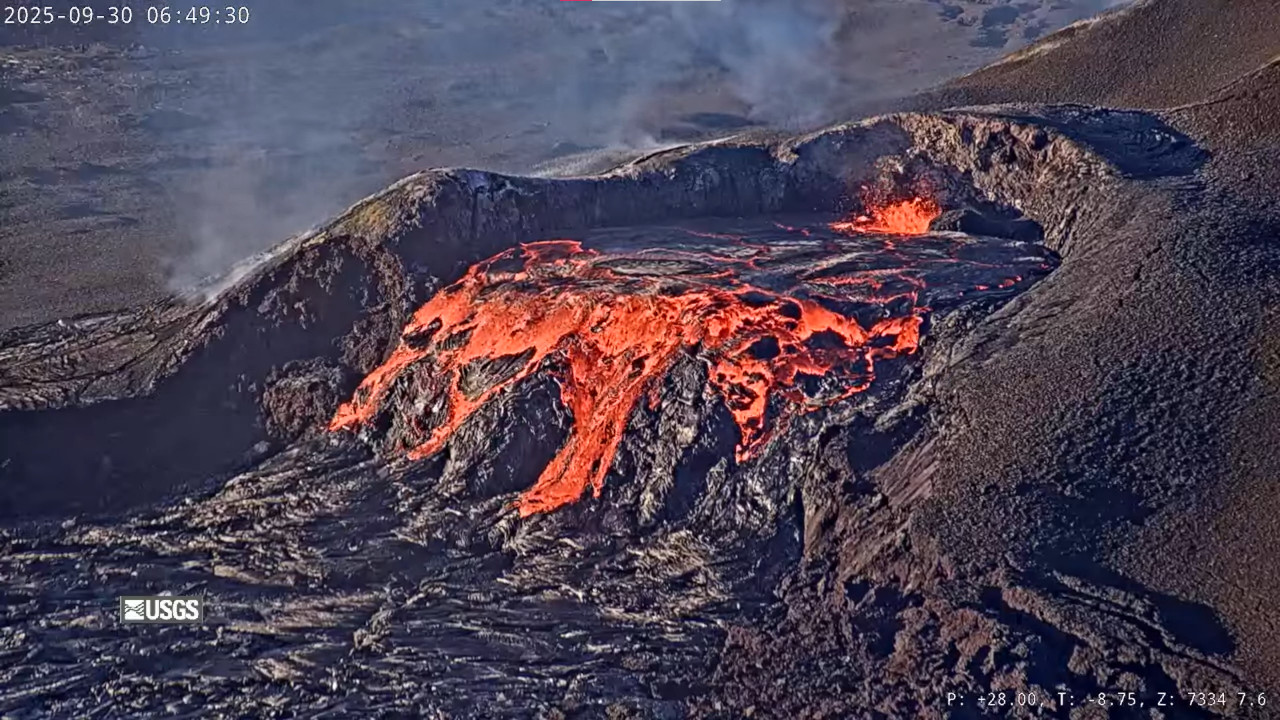(BIVN) – Episode 34 in the ongoing eruption at the summit of Kīlauea volcano remains in its initial stages as of 7 a.m. on Tuesday. Precursory activity began Sunday night, but high fountaining has yet to occur.
“There have been over 100 precursory overflows since the initial one at 9:43 PM HST on September 28,” the USGS Hawaiian Volcano Observatory noted on Tuesday morning. “Most happened yesterday, September 29, with nearly every gas piston resulting in an overflow. Since midnight there have only been 9 overflows.”
Summit inflation continues. Yesterday, the USGS HVO reported Episode 34 was most likely to start yesterday or today, with a chance it could begin tomorrow, October 1st.
No significant activity has been noted along Kīlauea’s East Rift Zone or Southwest Rift Zone. The USGS Volcano Alert Level remains at WATCH.
From the Tuesday update posted by the USGS Hawaiian Volcano Observatory:
Activity Summary:
Episode 33 lava fountaining ended on September 19. Glow from both north and south vents was observed overnight, with over 100 overflows from the north vent since September 28. The summit continues to inflate, and models indicate that episode 34 is most likely to start today, September 30, with small chance of starting tomorrow on October 1. No significant activity has been noted along Kīlauea’s East Rift Zone or Southwest Rift Zone.
Summit Observations:
Episode 33 lava fountaining ended at 12:08 p.m. HST on Friday, September 19. The UWD tiltmeter shows that the summit has been reinflating since the end of the fountaining episode, with 17 microradians of inflationary tilt. Overnight, HVO webcams showed persistent glow from north vent punctuated by over 200 gas piston cycles of lava filling and drainback, each lasting 2-10 minutes. Over 100 overflows were produced, mostly from 1:30 p.m. HST to just before midnight on September 29. There have only been 10 overflows since midnight with the last one occurring just before 6 a.m. HST. There was intermittent strong glow from south vent through the night and early morning. This morning, the caldera is quiet with a passive outgassing plume rising from the vents.
Elevated degassing continues from the vent. Average sulfur dioxide (SO2) emission rates during pauses are typically 1,200 to 1,500 t/d, though emission rates can vary on short time scales. Wind at Sand Hill, just south of Halemaʻumaʻu are blowing from the north to northeast direction, which suggests that volcanic gas emissions and volcanic material may be distributed south to southwest across the Ka’u desert within Hawaiʻi Volcanoes National Park.


by Big Island Video News7:14 am
on at
STORY SUMMARY
HAWAIʻI VOLCANOES NATIONAL PARK - The precursory stage of Episode 34 continues at the summit if Kīlauea, with high lava fountaining possible at any moment.